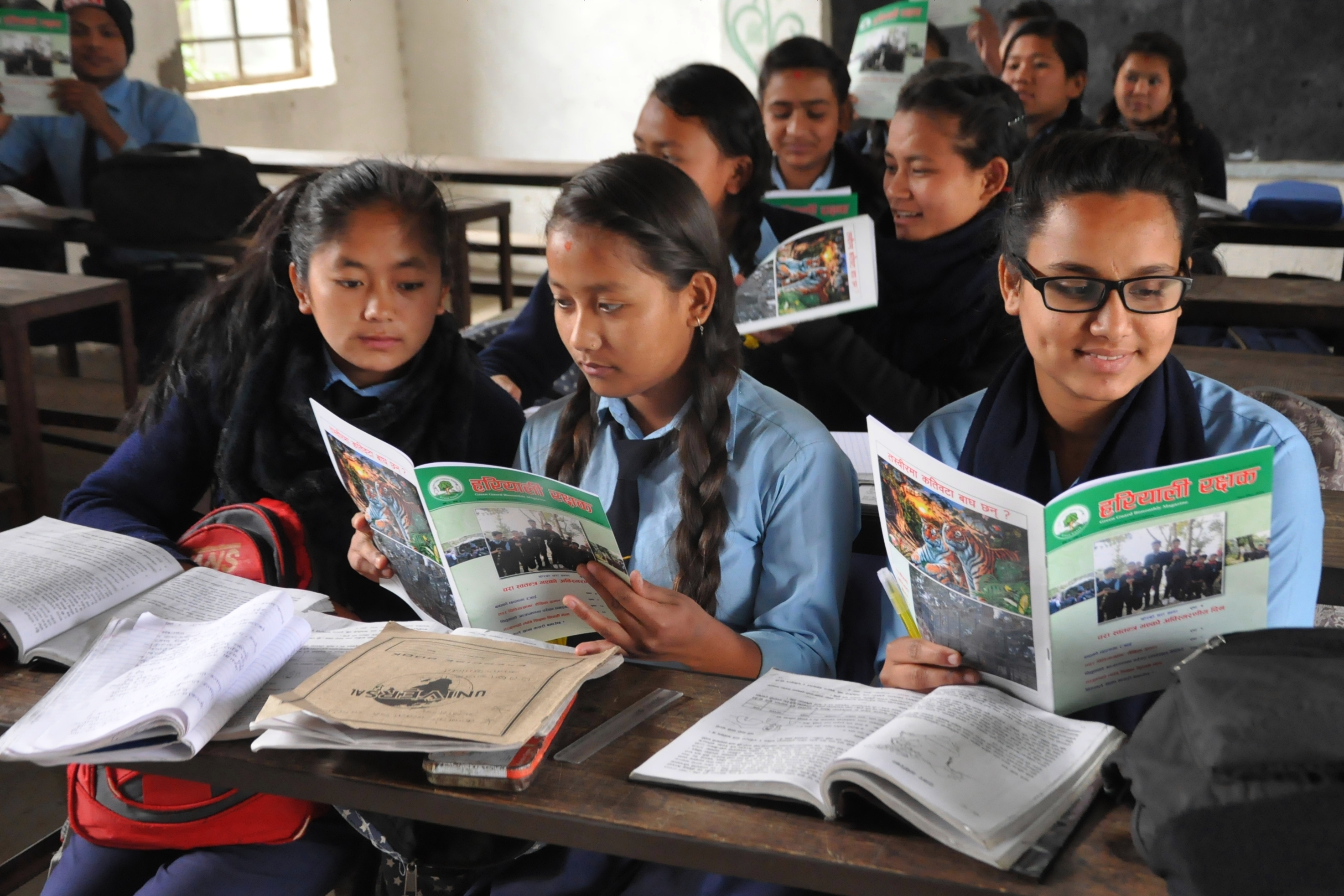People’s attitude toward wildlife is known to affect the success of conservation programs. Public education can increase support for conservation measures by providing the knowledge necessary to make informed decisions, improve pro-environmental behavior and potentially enlist participation. To that end, we developed a participatory conservation education program in Nepal, which was modeled after our Little Green Guards® program in China. We chose secondary school students as our target audience based on the evidence that children in that age group have the capacity to process complexities inherent in most conservation issues, and also tend to be the most receptive to attitudinal change toward wildlife. Although science is taught in grades 9 and 10 in Nepal, conservation is not part of the standard curriculum.
We developed custom lessons aimed to mitigate human-wildlife conflict and emphasized ecological balance by highlighting the crucial roles of individual species, including those that were regarded as pests, such as macaques and elephants. Besides classroom instruction, we incorporated a peer-to-peer, write-to-learn pedagogy into our conservation education program. This participatory learning format is known to enhance understanding, broaden knowledge base and increase retention. As such, students in our program were encouraged to carry out subject-specific research and synthesize the materials they read, then develop educational materials to aid each other’s learning. The students generally worked in teams and their output (e.g. essays, poems and drawings) were included in the Green Guard (ISSN 2645-8608), a wildlife conservation magazine we produce and distribute free-of-charge to students at participating schools.

Since 2016, more than 73,000 secondary school students throughout Nepal have participated in our program. Post-program evaluations showed that these students have gained not only broader knowledge about wildlife but also a deeper understanding about the importance of maintaining balance in nature. They now see how human behavior can negatively impact wildlife species, and how they can contribute to efforts that aid biodiversity conservation.
